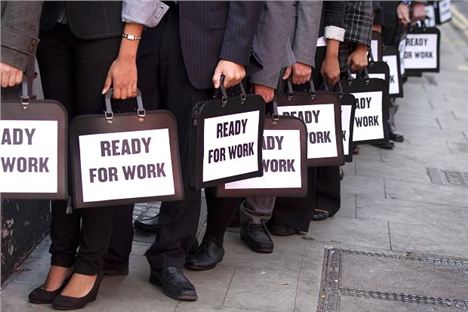THE latest State of the City report (2012), gives an insight into how Manchester is performing, socially and economically.
Now in its seventh edition, the report includes statistical evidence used to help city leaders, both from Manchester City Council and partner agencies, to understand priorities for the future.
So, what key indicators does the 2011/2012 report reveal?
In November 2012 there were 60,980 residents in Manchester claiming out of work benefits compared, compared to 58,140 in May 2008.
Manchester, along with other southern parts of Greater Manchester with which it is measured, generated economic output worth £32.51 billion in 2011 – a 1.5 per cent increase on 2010.
The number of people employed within the city has also gone up from 298,800 in 2010 to 309,400 in 2011, with the financial and professional services sector accounting for more than a fifth (22 per cent) of the city’s employees, compared to a national rate of 13 per cent.
The number of people starting apprenticeships more than tripled from 1,320 in 2005/06 to 5,190 in 2011/12.
However, there continues to be a gap between the average weekly wage for people working in Manchester (£433.40) and the average weekly wage for Manchester residents (£362.60). Although this gap has closed slightly, it is the largest wage gap outside London.
In November 2012 there were 60,980 residents in Manchester claiming out of work benefits compared, compared to 58,140 in May 2008 at the beginning of the economic downturn.
Reductions in the number of residents claiming Employment Support Allowance and Income Support have been offset by an increase in the number of residents claiming Jobseeker’s Allowance. Long term unemployment has risen since 2009.
 Long term unemployment has risen since 2009
Long term unemployment has risen since 2009
Educational performance continues to improve. In 2012, the percentage of pupils achieving five or more A* to C grades including English and Maths increased to 53.2 per cent from 51.8 per cent in 2011 and is now approaching the national average.
Health-wise, this year’s Longer Lives campaign death map painted a grim picture of Manchester. State of the City also found average life expectancies to be well below the national average. The previous State of the City report showed an increase in the number of deaths from suicide and self-harm between 2007 and 2010 and latest figures indicate that there was no significant change in 2011 – indeed the number of suicides was the same, 66, in 2011 as in 2010.
The under-18 conception rate for Manchester fell 27 per cent - from 71.3 per 1,000 in 2007 to 52.5 per cent in 1,000 in 2011.
Manchester’s 2012/13 target was to reduce victim-based crime (defined as including theft, violence against the person, criminal damage and arson) by five per cent by April 2013. The Partnership has succeeded in reducing such crime by almost nine per cent in the last year, and by more than 18 per cent since 2010/11.
On the environment, latest figures show that Manchester reduced its citywide carbon emissions by 16 per cent between 2005 and 2011. This represents an improvement from 7.6 per cent reduction in carbon emissions between 2005 and 2010, despite a growing population. The 2011 Census figure put the population at 503,100, making Manchester the country’s fastest growing city, and mid-year estimates for 2012 suggested this figure had gone up to 510,800. By 2021 this is predicted to rise to 532,200.
Much more work is required at a city wide level - by businesses, residents and public sector bodies if Manchester is to reach its target of a 41 per cent carbon emissions reduction by 2020.
Similarly the city has seen an increase in household recycling rates despite a growing population, although has some way to reach the targets set by government of 50 per cent recycling rate by 2020.
 The city has seen an increase in household recycling rates
The city has seen an increase in household recycling rates
Manchester City Council leader Sir Richard Leese said: “There’s a wealth of information in this report which does show progress against a backdrop of continuing, and in many cases deep-rooted, challenges and squeezed resources.
“Although Manchester is clearly a place where people want to live, work and invest – as well as visit – there are undoubtedly still considerable challenges to confront together and we do not shirk from that.”
The full State of the City report is available at www.manchesterpartnership.org.uk















